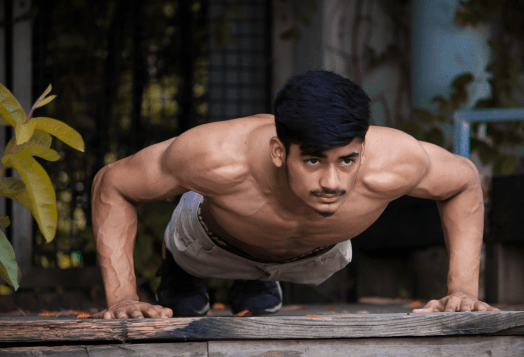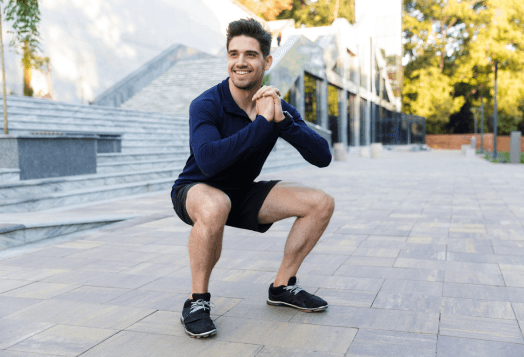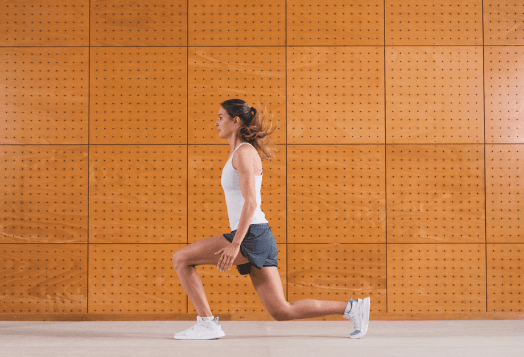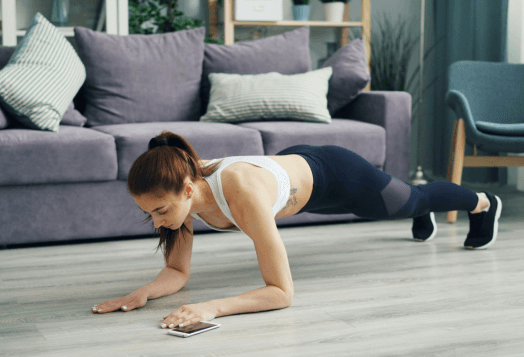Did you know that 30 minutes of callisthenics can help you burn 130 to 190 calories? Time to skip one episode of your favourite series.

That guy holding himself sideways on a pole? Yeah, looks like a superhero move.
The good news? You can start training like him today. Callisthenics is a simple way to build strength using your body.
This guide breaks down callisthenics basics, explains what callisthenics is, and shows how to do callisthenics step by step.
You just need 30 minutes, a bit of space, and the drive to make it happen.
What is Callisthenics?
At its core, callisthenics is strength training using your body weight and simple moves like squats, push-ups, and planks. The word comes from Greek—'beauty' plus 'strength.' It's a timeless, full-body method that develops power, coordination, and stability—no machines required.
Understanding what callisthenics is helps you appreciate why this training method has stood the test of time. It uses compound movements that work for multiple muscle groups simultaneously. This approach creates functional strength that translates directly to everyday activities.
Benefits of Callisthenics for Beginners
Combining expert research and real-world results, here's why callisthenics is perfect for newcomers:
1. Build Functional Strength
Bodyweight training mimics everyday motions, lifting, pushing, balancing, which helps you get stronger where it matters. When you learn how to do callisthenics properly, you develop strength patterns that carry over to daily activities like carrying groceries, climbing stairs, or playing with children.
2. Boost Flexibility & Mobility
Moves like lunges and squats stretch and loosen joints while building strength. Science confirms that callisthenics enhances flexibility and joint control simultaneously. This dual benefit makes it superior to traditional weight training for overall mobility.
3. Improve Body Awareness & Control
You learn to feel your muscles engage and navigate space—great for balance, posture, and coordination. Callisthenics basics teach you to understand your body's positioning and movement patterns, creating better overall athletic ability.
4. Minimal to No Equipment
All you need is space and willingness. It's ideal for callisthenics for beginners at home—no heavyweight bars or monthly fees required. This accessibility makes it perfect for maintaining consistency regardless of your schedule or location.
5. Suitable for All Fitness Levels
Every exercise can be modified—knee push-ups today, full push-ups tomorrow. This flexibility makes callisthenics beginner-friendly and progressive, allowing you to advance at your own pace.
Basic Callisthenics Moves for Beginners
These callisthenics exercises for beginners form the foundation of your bodyweight training journey.
1. Push-Ups for Your Upper Body Foundation

Starting Position:
Place hands slightly wider than shoulders on the floor
Keep your body flat like a plank from head to heels
Engage your core to maintain this straight line
Movement:
Bend your elbows to lower your chest slowly toward the floor
Lower until your chest nearly touches the ground
Push back up with control, extending arms fully
Keep your body rigid throughout the movement
Beginner Tip: Start with knee push-ups or wall push-ups. Place your knees on the ground or stand arm's length from a wall. The movement pattern remains the same, but the difficulty decreases significantly.
2. Squats to Build Lower Body Power

Starting Position:
Stand with feet hip-width apart
Point toes slightly outward
Keep arms extended forward for balance
Movement:
Sit back as if lowering into a chair
Keep knees behind toes and chest lifted
Lower until your thighs are parallel to the ground
Stand up through heels, squeezing glutes at the top
Beginner Tip: Use a chair behind you as a guide. Sit back until you lightly touch the chair, then stand up. This teaches proper depth and form.
3. Lunges for Strength Building

Starting Position:
Stand tall with feet hip-width apart
Keep hands on hips or extended for balance
Movement:
Step one foot forward, creating a long stride
Lower until the back knee nearly touches the ground
Keep front knee over ankle, not extending past toes
Push back up to the starting position
Switch legs and repeat
Beginner Tip: Start with stationary lunges instead of walking lunges. Master the movement in one place before adding the walking component.
4. Planks for Core Stability

Starting Position:
Start in a push-up position
Lower onto forearms, keeping elbows under shoulders
Create a straight line from head to heels
Movement:
Hold this position while breathing normally
Keep hips level—don't let them sag or pike up
Engage your core as if bracing for a punch
Maintain the position for the prescribed time
Beginner Tip: Start with 15-20 second holds. Build up gradually rather than trying to hold for long periods with poor form.
5. Inverted Rows for Upper Body Pulling

Starting Position:
Lie under a sturdy table or use a low bar
Grab the edge with your hands shoulder-width apart
Keep your body straight with your heels on the ground
Movement:
Pull the chest toward the table/bar
Squeeze shoulder blades together
Lower with control to starting position
Keep body rigid throughout
Beginner Tip: Bend your knees and place your feet flat on the floor to make the exercise easier. As you get stronger, straighten your legs.
30-Minute Callisthenics Routine for Beginners
This callisthenics workout plan for beginners at home is structured to provide maximum results in minimal time. Follow this routine 3 times per week with at least one rest day between sessions.
Warm-Up (5 Minutes)
Proper warm-up prevents injury and prepares your body for exercise:
Jog in Place - 60 seconds
Lift knees slightly higher than normal walking
Swing arms naturally
Start slow and gradually increase the pace
Arm and Shoulder Circles - 10 reps in each direction
Extend arms out to the sides
Make small circles, gradually increasing the size
Reverse direction after 10 reps
Hip and Leg Swings - 10 each side
Hold onto a wall or chair for balance
Swing one leg forward and back
Keep movements controlled and smooth
Dynamic Lunges - 6 per leg
Step forward into a lunge position
Hold for 1 second, then return to standing
Alternate legs with each repetition
Main Workout (20 Minutes)
This section contains the core callisthenics exercises for beginners that will build your strength foundation:
Push-Ups (or Knee Version) - 2 sets of 8-10 reps
Rest 30 seconds between sets
Focus on controlled movement over speed
If regular push-ups are too difficult, use knee push-ups
Squats - 2 sets of 10 reps
- To get the most out of this move, check out our Perfect Your Squat Form guide for tips and variations
Rest 30 seconds between sets
Maintain proper form throughout
Focus on sitting back and driving through heels
Inverted Rows - 2 sets of 5-8 reps
Rest 30 seconds between sets
If you don't have a table, skip this initially
Focus on squeezing shoulder blades together
Lunges - 2 sets of 8 to 10 reps per leg
Rest 30 seconds between sets
Complete all reps on one leg before switching
Keep movements controlled and balanced
Plank - 2 sets of 30-second holds
Rest 30 seconds between sets
Maintain a straight line from head to heels
If 30 seconds is too long, start with 15 seconds
Cool-Down (5 Minutes)
Proper cool-down helps your body recover and prevents stiffness:
Quad Stretch - 30 seconds per leg
Stand on one leg, pull the heel toward the glutes
Hold the ankle gently; don't force the stretch
Keep knees close together
Hamstring Forward Fold - 30 seconds
Sit with legs extended
Reach forward toward toes
Don't bounce, hold steady, stretch
Shoulder Cross-Chest Stretch - 15 seconds per arm
Pull one arm across the chest
Use the other arm to gently increase the stretch
Feel a stretch in the shoulder and upper back
This callisthenics for beginners at home routine trains all major muscle groups while teaching control and balance. Consistency is key—follow this plan for 4 weeks before progressing to more advanced variations.
Common Mistakes to Avoid
These errors can hinder your progress while learning the callisthenics basics:
Bouncing at the squat bottom—control the movement throughout
Swaying hips in planks—keep a straight line from head to heels
Holding breath—breathe smoothly throughout all exercises
Cutting range of motion—lower chest at least halfway in push-ups
How to Progress Over Time
Callisthenics offers endless progression opportunities:
Weeks 1-4: Master basic form and build consistency
Weeks 5-8: Add variations like decline push-ups or deeper squats
Weeks 9-12: Increase reps or sets gradually
Beyond 12 weeks: Advance to skills like wall-assisted handstands, L-sit holds, or master advanced upper body strength moves—start with our How to Do Dips Exercise guide
Ready to Build Strength That Shows?
Basic callisthenics offer a path to functional strength, flexibility, and control—no equipment required. By understanding what callisthenics is, practising how to do callisthenics, and following this 30-minute callisthenics workout plan for beginners at home made by expert fitness trainers, anyone can transform their fitness.
Take action today. Your stronger, more capable self is waiting.
Disclaimer: This article is for informational purposes only and should not be considered as advice. Please consult a certified fitness expert to make decisions based on your specific situation.




